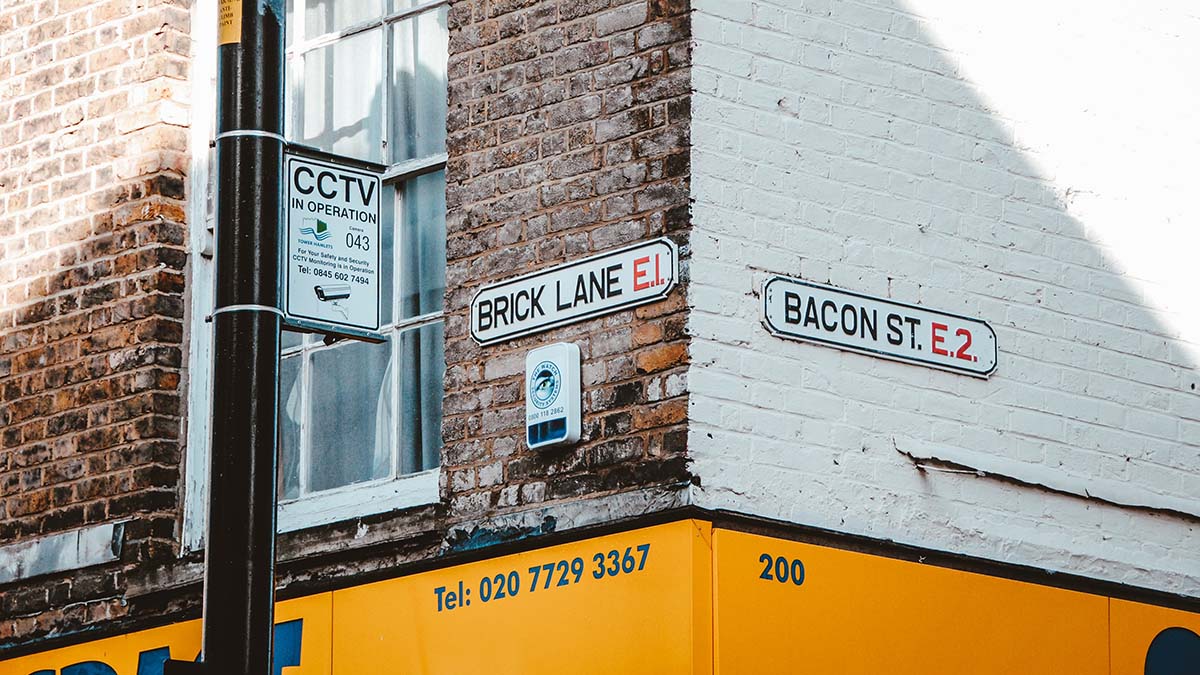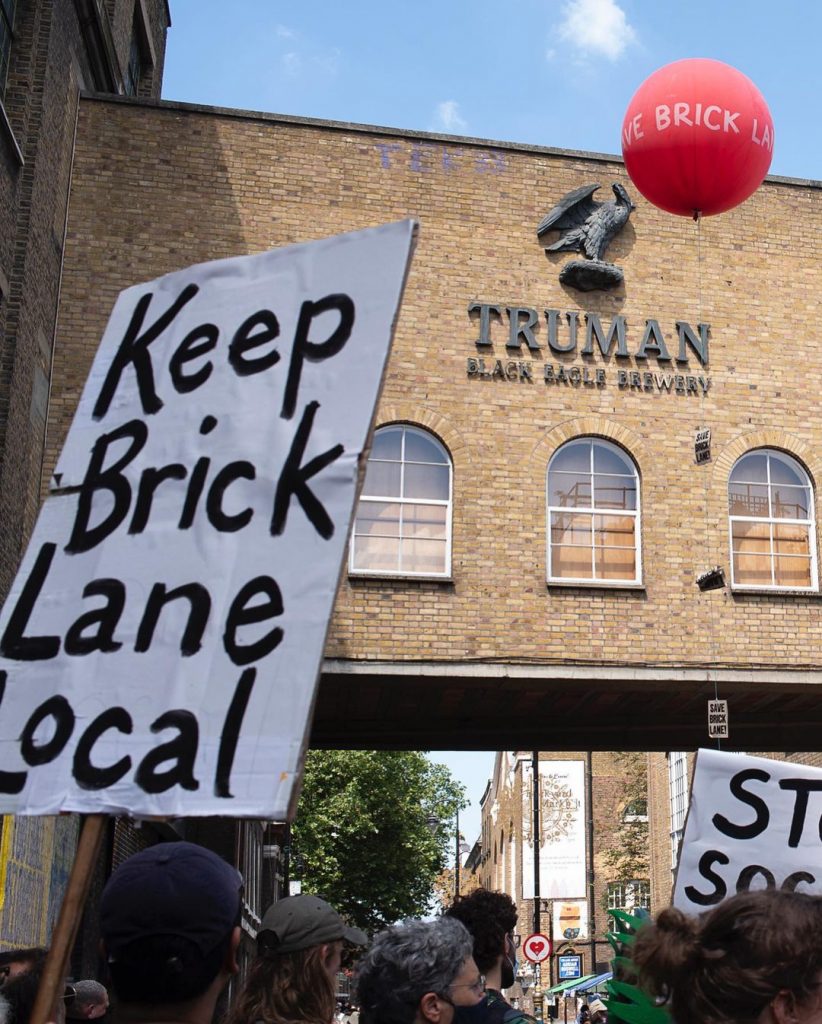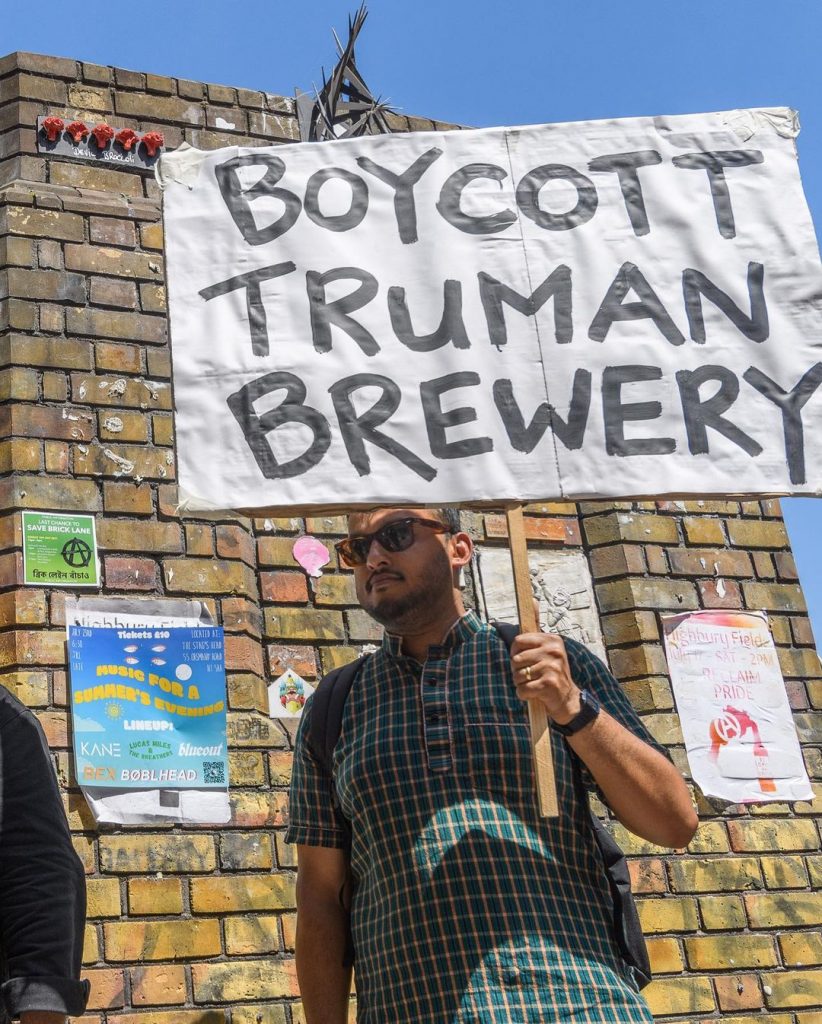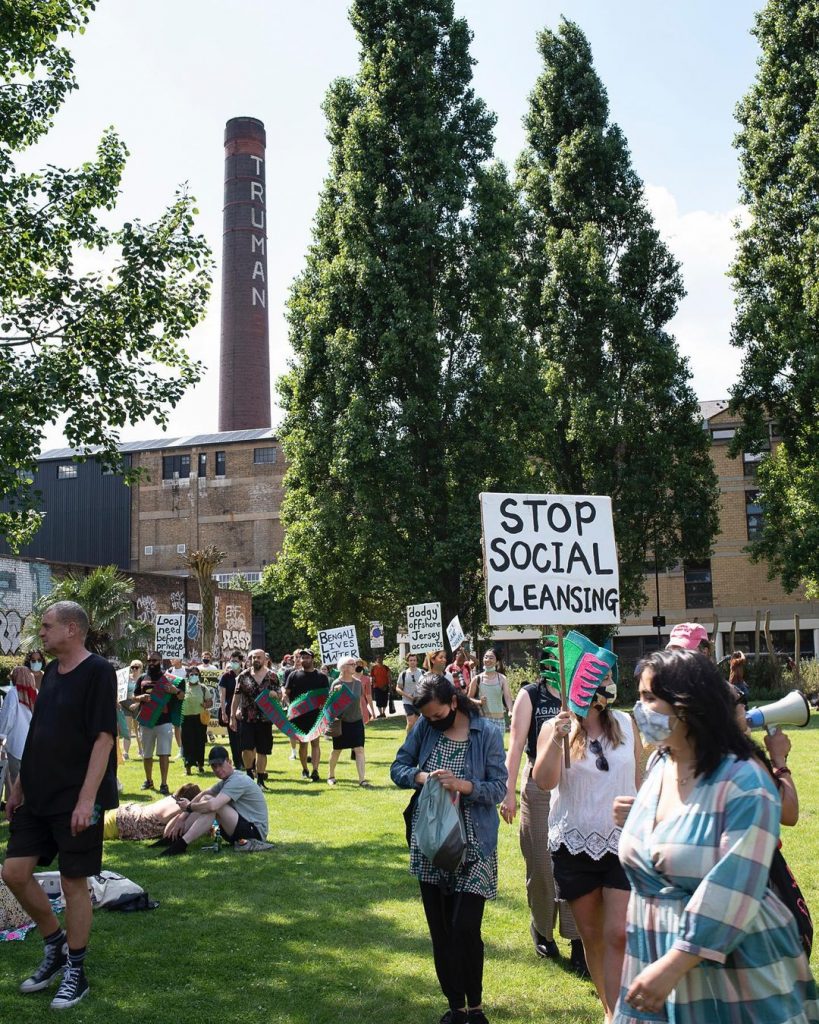The Brick Lane area of London is being threatened by the local council with the construction of a mall, leading to the gentrification of the mostly South Asian area. How is Nijjor Manush, a local campaign group, using social media to combat this?

When the Tower Hamlets Council announced the construction of a shopping mall at the heart of Shoreditch in the Spring of 2021, they received over 7,500 complaints because people were outraged. The mostly South-Asian community in East London would be affected the most, shunned away from an area they’ve called home for over a century.
The project proposed by the council would run on different streets around the Brick Lane area, destroying an old market and displacing local shops and curry restaurants, which make that area so original. Funded by the Truman Brewery, one of the biggest pub chains in London, it would cause a rise in rent that most locals can’t afford, forcing them to relocate, and contributing more to the gentrification of East London, as well as the erasure of South Asian culture.
On social media, people were outraged: they demanded a different verdict, insisting that it would ruin Brick Lane’s reputation, and contribute to the gentrification of the already-changing area. This is how the Save Brick Lane campaign started, fuelled by many campaign groups around London, including Nijjor Manush.
“One of our followers messaged us on Instagram about it actually,” explains Hajera Begum, one of their campaigners. “That’s when we put out some posts informing others about it. So, we wrote an example template with different arguments that people could make to email to their councillors. And complain about it. And that social media template got shared more than any of our other posts.”
Nijjor Manush is a London-based campaign group that works toward empowering and educating about South Asian’s culture and influence in the UK. The name translates to ‘my people’, like your own family, friends, and close ones. It was created out of the need to see more representation, especially about Bengali and Bangladeshis. It was created by a group of 10 friends a few years ago and is based mostly on Instagram and Twitter but still aims to take concrete actions. They “try to really avoid Nijjor Manush being just a social media platform.”
“We just started talking about how interesting and vibrant the South Asian generations before us were, and how active they were in their community,” says Hajera. “They were so many campaigns that took place, and we didn’t know about these things until we did our own research in university or through student politics. We felt that the issues remain in different forms, but the lessons could very directly be taken from how they organised to how we need to be organising right now.
“Because the community faces very similar issues, be it in housing or like gentrification. And we just wanted to kind of create those links. We kind of wanted to kind of foster that kind of mentality of, ‘we should know about ourselves, and we should feel inspired to then be ourselves’.”
When they posted a template of a letter that people could copy to send to their local councillors, the post had thousands of interactions. As a result, the Tower Hamlet Council received nearly 7,500 complaints compared to 82 letters of support for this specific project. This is more than 10 times what they would usually receive. Hajera admits that that’s when she and her team realised that people really cared about this kind of issue and wanted to see change happen.
“It was that energy that then helped us start the physical Stop Brick Lane campaign,” she explains. “Then the coalition was born out of not just Nijjor Manush but having a coalition with many other groups working around Tower Hamlets. And that shows that people care enough to make these networks. And then that gave us the confidence to kind of go and talk to people face-to-face as well.”
Indeed, every weekend, sometimes even several times a week, their team members would be on the ground, heading out leaflets, door-knocking, talking to businesses and calling councillors. Hajera insists that that “the Save Brick Lane campaign isn’t primarily a social media campaign – It’s actually primarily and on the ground campaign, and social media is really one small element of what we’re doing.”
And yet, she can’t deny the importance social media has played on the success of the campaign.
“I think you just can’t reach that many people without social media now,” she says. “It’s an amazing way of reaching people and connecting with different organisations in different campaigns. So, I think that that’s the massive advantage of it. Interestingly enough, that’s the way we found out about the campaign, from someone messaging us on Instagram. I think social media makes it very easy to physically reach many people if used correctly.”
Social media activism is something that has become so prevalent in the past few years because of the rise in social media consumption, especially during the pandemic. Surveys show that 85% of people under 30 use at least one form of social media platform on a daily basis. On top of that, 36% of them have said that they used the platforms to seek out and support activist causes.
“We’re using social media to kind of spread information,” Hajera explains about Nijjor Manush. “But at the same time, we do want to encourage people to come to events and do their own research. That when you inspire someone that they then go and do their own research or attend other events for the cause. We don’t want our page to just say, ‘Come and read four little slides on Instagram posts about one topic and think you’re an expert in it’. Absolutely not. It’s more like, ‘did you know about this? And if you’re interested in it, find out more. I think social media is just one piece of the puzzle.”
But it’s important to remain critical too, she explains: you can learn about certain issues, but there needs to be an application of what you have learnt. Social media activism is indeed often called performative by pessimists to undermine young activists and their accomplishments.
“Sometimes for sure [the application] can be missing. And you can feel like, ‘oh, I’ve shared the post and I’ve done my bit.’ And that might be your bit for some things, and that might be all you can do, but that can’t be all for everyone.”
Nijjor Manush were far from receiving only support for their different campaigns. Being open and honest on social media implies streams of people who disagree with you, and who are very vocal about it – whether it be about your opinions or about how you go about publicising your opinions. But that’s not always a bad thing, explains Hajera.
“I think um, social media gives people an opportunity to have dark conversations,” she says. “Social media is a good place to get conversations going and to pique interest. I think sometimes we can get like wrapped up in, you know, ‘we’re having this modern crisis and things are turning terribly wrong’, and I’m not sure that’s the case. I think there’s always been multiple tactics and advantages and disadvantages to them, and things have moved forward always. And they will continue to.”
Eventually, in mid-September, the Tower Hamlets Council decided to proceed with the construction plans of the shopping mall. But as Hajera states, that doesn’t mean it’s the end.
“Even though in the end they did put the plans through, I think the social media campaign was a big help. And we hope it will continue to help for different campaigns. I hope it doesn’t end there,” she concludes.





